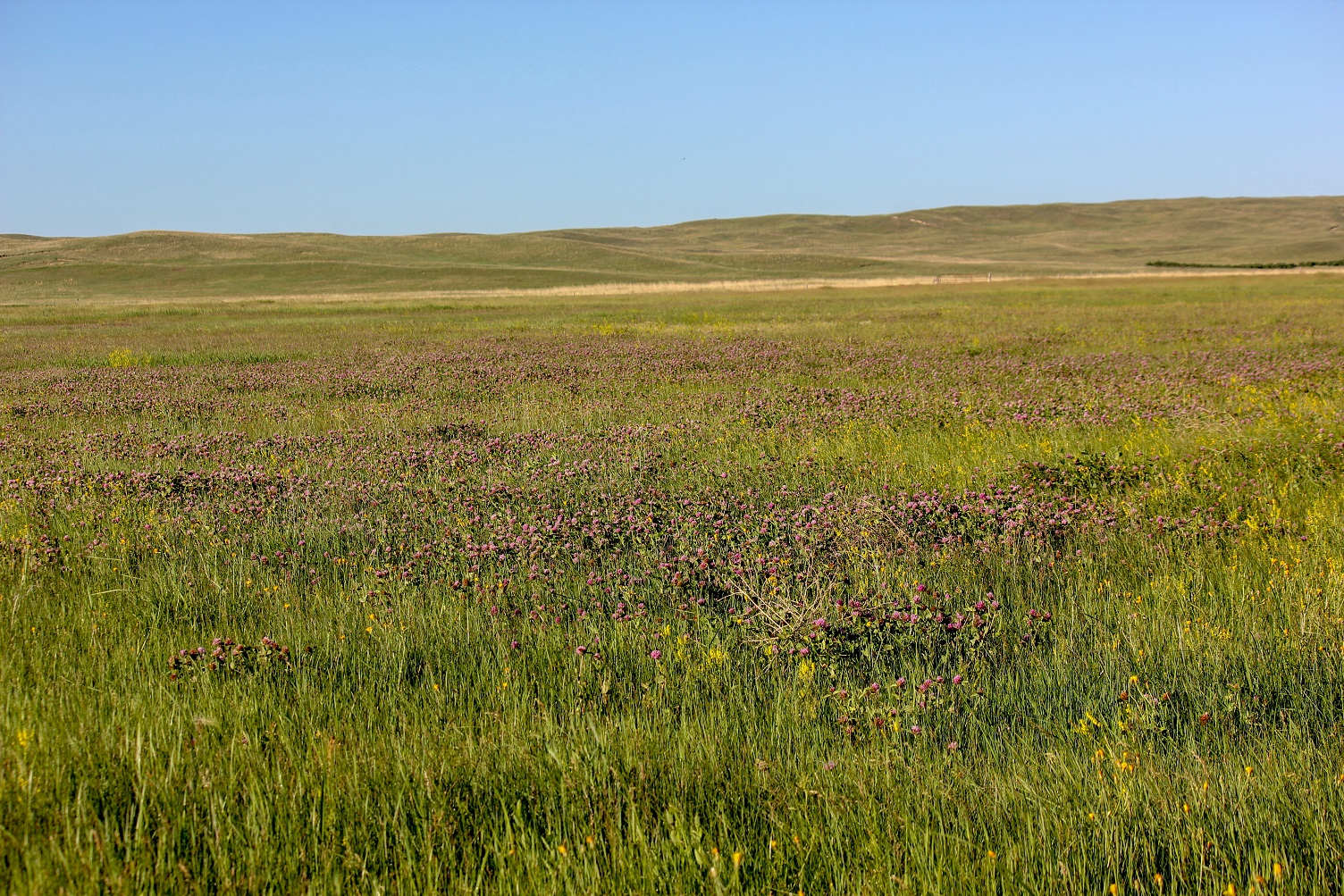Ben Beckman, Nebraska Extension Educator
Brad Schick, Nebraska Extension Educator

From a forage perspective, winter is typically a time for using the resources we have on hand and planning ahead to next year’s growing season. However, there may be some opportunity to take this time to improve your pasture with some alternative legume seeding options.
Benefits
Interseeding improves pasture production in two main ways, through fertility and quality. Most legume species: alfalfa, clovers, birdsfoot trefoil, are high in protein and energy. By adding them to the grazing options for your animals on grass, the overall diet throughout the course of the year can be improved, positively impacting animal condition and productivity.
Additionally, legumes are well-known for their ability to pull nitrogen from the air and fix it in a form useable by plants. In a grass/legume mixture, the legumes are not producing nitrogen for the whole pasture, but they are making enough for themselves which greatly reduces the nitrogen demand for the pasture as a whole. This nitrogen application cost savings, keeps money in your pocket when it comes time to fertilize.
Choosing a Location
Picking the right pasture is critical to successful legume establishment. Legumes need adequate levels of phosphorus and a pH of 6 or greater. Some species prefer pH closer to 7. With this in mind, taking the time to soil sample is worth the time and effort before spending more money and time on seed.
Additionally, maintaining legumes in a pasture may require a closer eye on soil nutrients as well as adjustments to current weed management strategies. Most legumes are herbicide sensitive, so pastures with heavy weed pressure that need treatment are not good candidates.
This time of year, getting a drill into the ground to interseed isn’t typically an option. Normally frozen soil and direct seeding don’t work well together, although with mild winters, there may be some windows of opportunity. Even the topography of a pasture may limit the ability to use a drill.
One of the biggest challenges to interseeding is the competition from already established grasses in the pasture. Because plants that were grazed before going dormant are slower to recover in the spring, a heavily fall grazed pasture is a good candidate for interseeding. A more open canopy and less competition from surrounding plants will allow seedlings the opportunity to firmly establish before they have to start fighting for nutrients, sun, and moisture.
Feeding Seed
Two other methods that might be considered are feeding seed and frost seeding. Both can occur with frozen soils and have less topographical limitations than using a no till drill. Feeding seed is exactly what the name implies. Hard seed, typically clover, is mixed in with a supplement or mineral and fed to animals in the hope that some seed passes through the digestive system still viable and is able to germinate on the other side. Studies at North Carolina State University have shown that uncoated seed has a better chance at remaining viable than coated, especially when fed through loose mineral. Coated seed retained more moisture allowing the high salt environment to negatively affect the enclosed seedling. Coating also reduced viability once in the animal, although the exact reason for this interaction was hard to pin down.
One last thing to consider when feeding seed is seedling survival. Since seed is deposited in manure, one might think this would be the perfect place to start life. However, the same North Carolina study showed that the cow pie environment was often too dense and nutrient rich to maintain seedling survival beyond a few weeks, even if the seed germinated. Their study showed improvements of 40-60% when pastures were dragged and manure pats spread out.
Frost Seeding
A preferred method with higher success than feeding seed, is frost seeding. Frost seeding is a general broadcast of seed across the ground during the winter, allowing the natural freezing and thawing of the ground to, in effect, plant the seed for you. One draw-back to frost seeding is the need for a relatively snow-free landscape for the seed to get down to the soil surface before imbibition and take advantage of the freezing and thawing action.
While seeding rate will depend upon species, a good rule of thumb when seeding into an existing grass stand is 2-3 lb. of seed per acre. With the lower likelihood of germination with this method, bumping that up an extra lb. might be a good idea.
As things green up in the spring, heavily flash grazing to set back the established grass can reduce competition to the new seedlings and improve success. This will require a bit of scouting to make sure the timing is right. Wait until the grass is 3-4 inches above the seedlings, then graze it down to the seedlings height.
While winter may not seem like the time to put seed in the ground, alternative seeding methods like frost seeding and feeding seed may be exceptions to the rule. Both may be worth exploring as ways to improve pasture performance with lower labor requirements and not having to worry about seeding during busier times this spring.
Resources
Comparing the effectiveness of establishment between fed and frost seeded red clover into perennial pasture, Page Smart, Thesis- North Carolina State University, 2016
Interviews with the authors of BeefWatch newsletter articles become available throughout the month of publication and are accessible at https://go.unl.edu/podcast.
University of Nebraska-Lincoln
